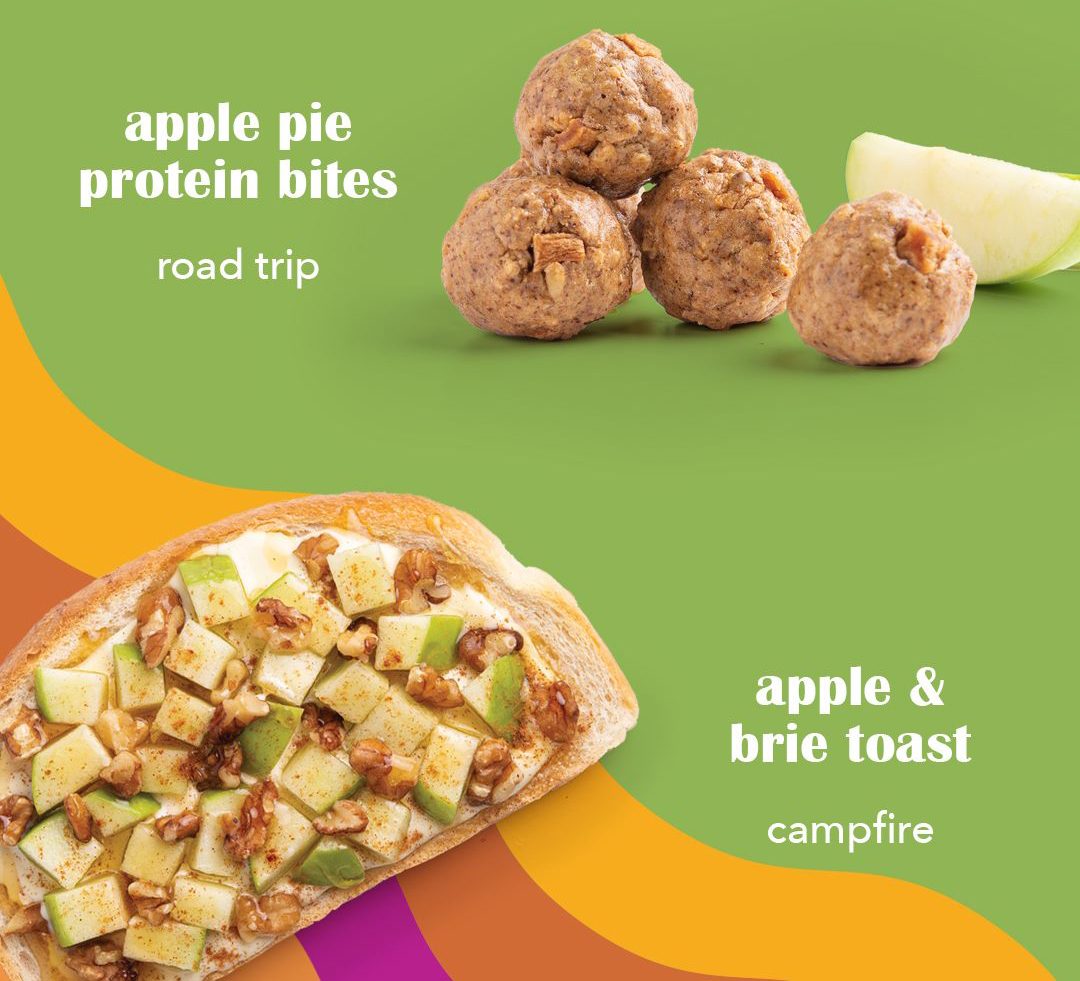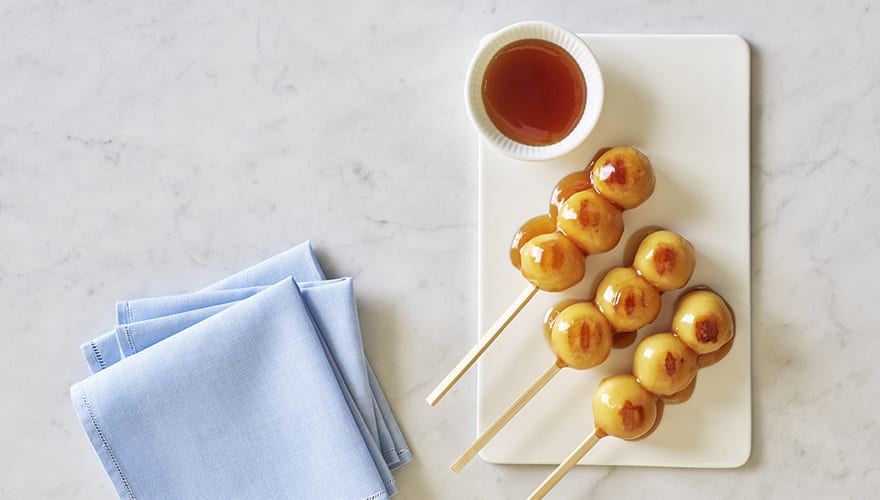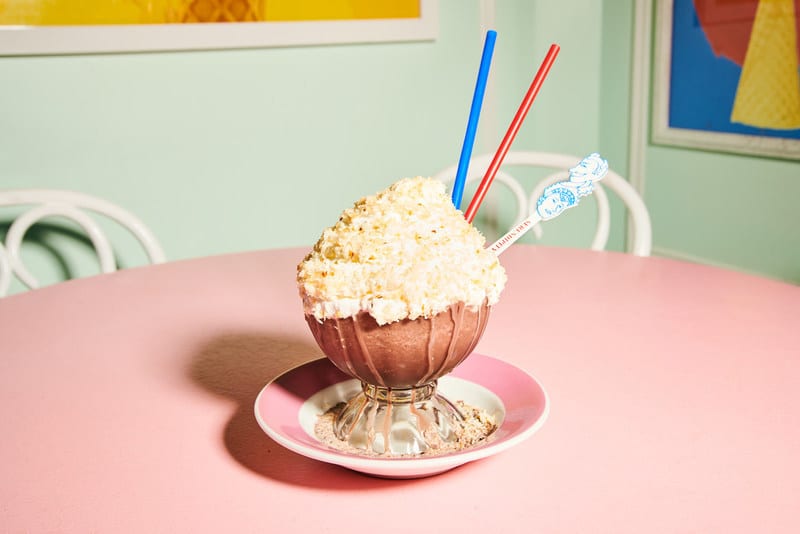Right
Just the
Bite
trends
Where’s the on-trend “sweet spot” in desserts? Foodservice expert Datassential suggests it’s a balance of what’s bold and familiar.
Let’s talk about the elephant (ear) in the room? Many consumers are hyper-focused on eating for health and they’re eating less red meat and curbing processed foods and carbs. Even so, desserts of all types remain important for many diets—even more so than consumers will admit.
When it comes to desserts, healthfulness is of less concern and flavor ranks highest for consumers. In fact, Datassential research shows that more than half of all consumers consider the flavor of a dessert as one of their top three factors when ordering a dessert away from home. For restaurants creating or editing a dessert menu, this suggests that operators should incorporate more indulgent and trending flavors while they downplay the format or type of dessert.
By SAMANTHA DES JARDINS, Contributing Editor
Photo courtesy of: Getty images / SMarina

The National Restaurant Association presented one of its 2021 Food and Beverage Awards to Eli’s Cheesecake, Chicago. The company’s Mini Dulce De Leche Pie is on trend with ethnic flavor appeal and miniature, bite-size portioning. Photo courtesy of: Elis
Global, Nostalgic Flavors
What’s hot? Menu mentions show growing interest among consumers for globally inspired desserts. In fact, several global varieties are among the 10 fastest-growing desserts on menus—including churros, pots de crème, mochi, and halva.
In particular, frozen desserts with a nod to global flavors are among what Datassential calls one of the 10 dessert “mega trends.” Almost 40% of consumers rank them extremely or very appealing. Interest is even higher for younger consumers, who tend to stretch further in their culinary tastes.

Taking risks through the introduction of global flavors should be rewarded by consumers eager to try new things. Even so, that should be balanced with a strong dose of the familiar, as well. Pandemic-stressed consumers are likely to turn to beloved childhood favorites and it’s not surprising that nostalgia also ranks highly on dessert wish lists.
Keep in mind that what counts as a childhood favorite varies by generation. Baby Boomers, for example, tend to have nostalgic ties to desserts such as cherries jubilee, pineapple upside down cake and fruit cobbler. Meanwhile, Gen Z consumers tend to prefer flavors such as Nutella, cotton candy, sour apple, and “funfetti.”
Valuing Vegan
While most consumers throw the word “healthy” out the window when choosing a dessert, there’s one growing exception: vegan desserts.
Superfoods café chain Frutta Bowls, St. Petersburg, Fla., included Apple Pie/Crisp Protein Bites in its seasonal “Legends of the Fall” menu campaign. The protein bites feature cinnamon granola, graham cracker, almond butter, vanilla whey protein, honey, and dried apples. Smaller, hand-held desserts often can appeal more than larger, traditional portions. Photo courtesy of: Frutta Bowls / WOWorks

Regardless of whether you’re a restaurant operator or a retail supermarket, you shouldn’t ignore a vegan option (or maybe more depending on customer base). Datassential research shows that vegan offerings are a draw for one in four consumers, and a staggering 45% of Millennial consumers.
Datassential shows term “vegan” was the fastest growing term on frozen dessert menus, up 169% on frozen treat menus during the last four years. While few proclaim to have a strictly vegan diet, many consumers are interested in choosing a vegan option if and when it’s available. This shows the potential of vegan desserts to be an added revenue driver on menus.
Sweet Meets Street: More US consumers are becoming familiar with mochi. One on-trend dessert option could be grilled mochi skewers with a soy sauce glaze that adds a little salty twist. This is a traditional Japanese street food and is often enjoyed with a cup of tea. Photo courtesy of: Kikkoman Sales USA Inc.

Tempting Tastebuds
Overall, the desserts that consumers are most interested to try are seasonal desserts, which in the fall would incorporate flavors like cinnamon, apple or pumpkin. Ranking next are mini desserts. These are popular among consumers who want the option of a smaller bite. It also allows customers to mix and match favorites.
Datassential’s consumer survey next shows inventive fritters and donuts ranked third in terms of consumer interest level. Then comes “next-level” chocolate offerings.
When it comes to choosing the types of desserts for a restaurant menu, classic desserts such as pie and cheesecake are tremendously popular among consumers. On the other hand, they’re not the ones that generally provide the biggest sales margins. Hand-held desserts—think hand pies or brownies—tend to provide a bigger bang for your buck in in regard to the bottom line.
New on the Menu! New York City’s Serendipity3 restaurant now offers a vegan-friendly version of its legendary Frrrozen Hot Chocolate. The new dessert features a mix of cocoa powders, powdered sugar and cream of coconut, blended with ice, and topped with a mountain of coconut milk whipped cream and a sprinkling of toasted coconut flakes. Photo courtesy of: Serendipity3
And of course, dessert can fill an important role in the revenue stream of a restaurant, just as alcohol does for those that serve it. In fact, 60% of operators say that the desserts they offer help to drive profit, according to Datassential.
But when building a strong dessert menu, it’s also important to know when your customers are most likely to indulge in a sweet treat, whether it’s as a snack or an extra treat at the end of a meal. Options like cookies, ice cream and handheld options are most often eaten as snacks, while cheesecakes, pies, and cobblers are eaten as a treat at the end of a meal. PF
Samantha Des Jardins is a copywriter at Datassential. Datassential connects the dots between consumers and the food & beverage industry – deploying data insights to predict what’s going to be next on your plate and in your glass, and empowering foodservice leaders to make simply smarter decisions. Visit datassential.com to learn more.
January 2022
